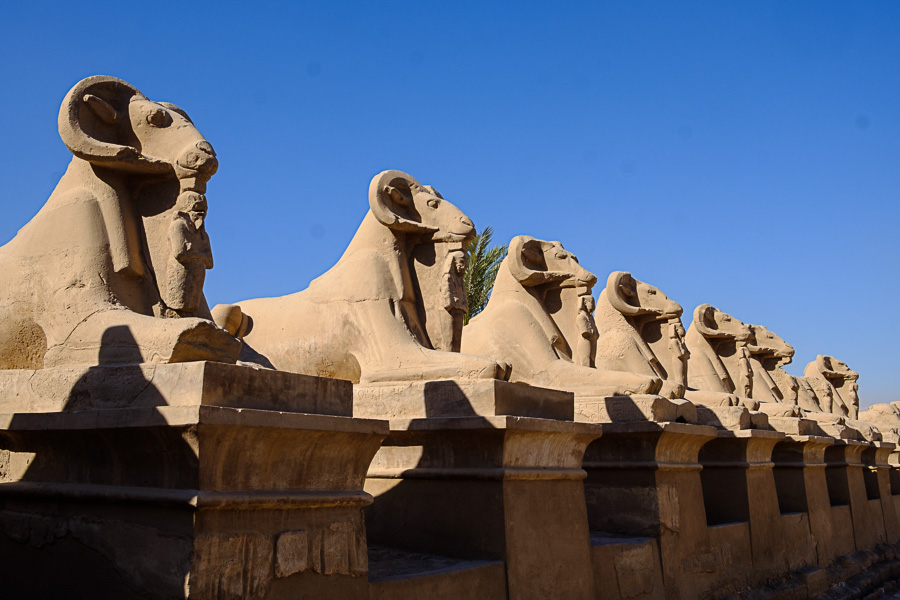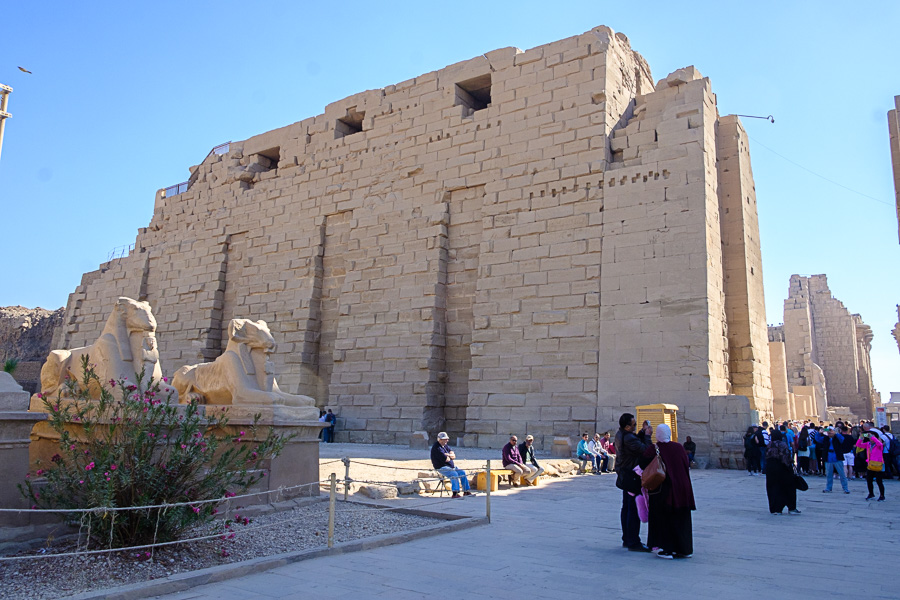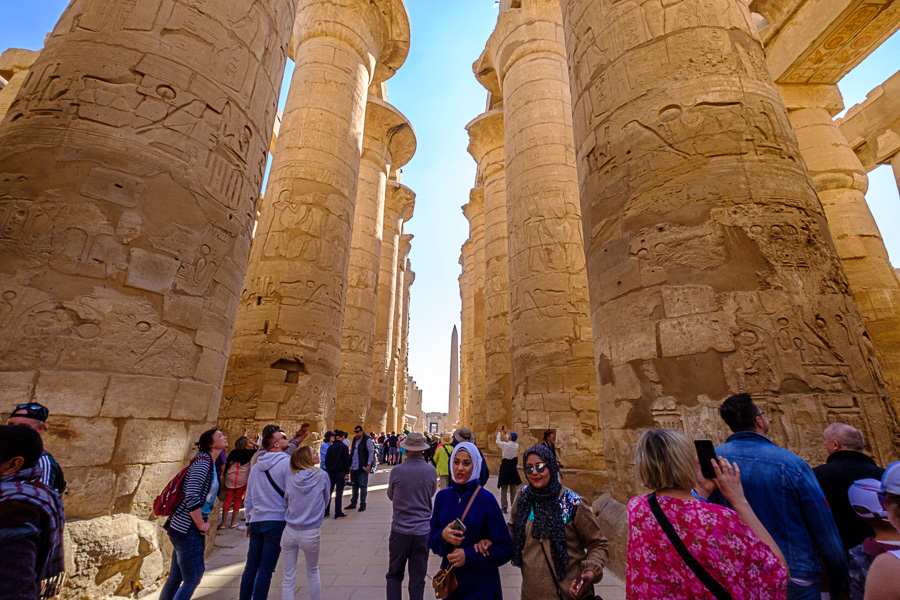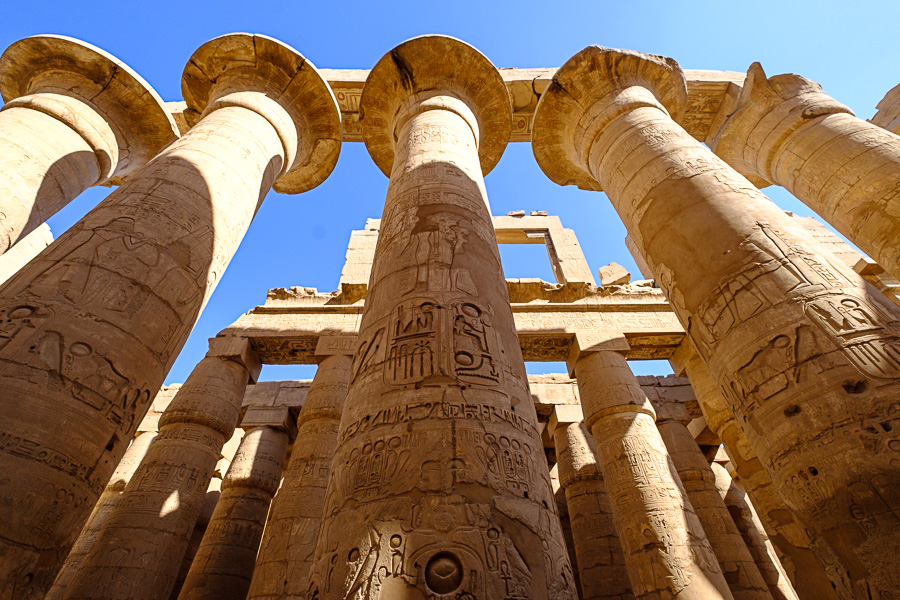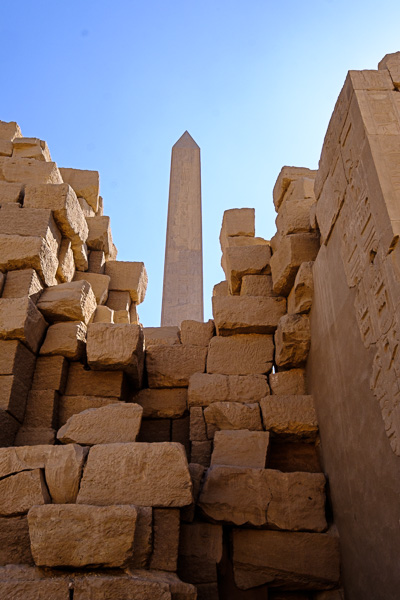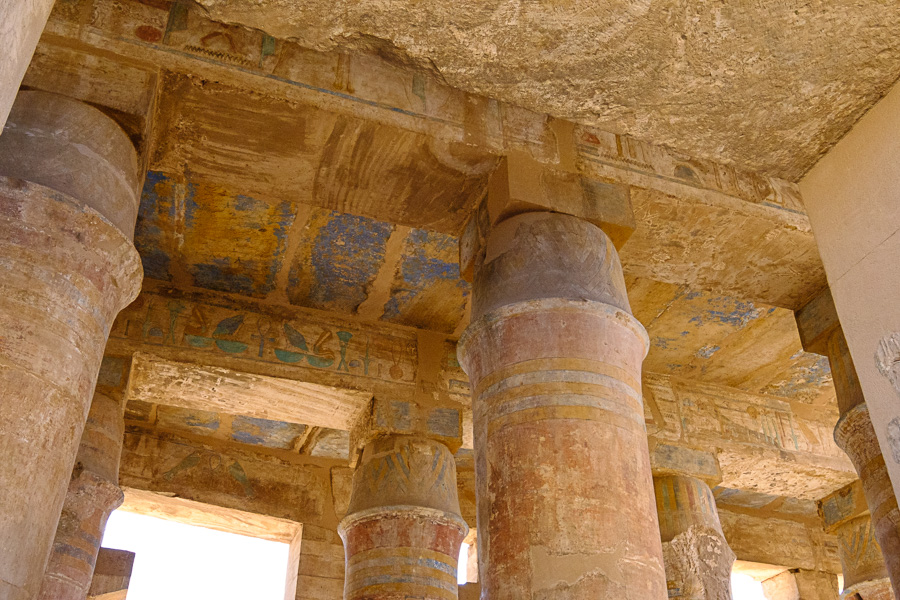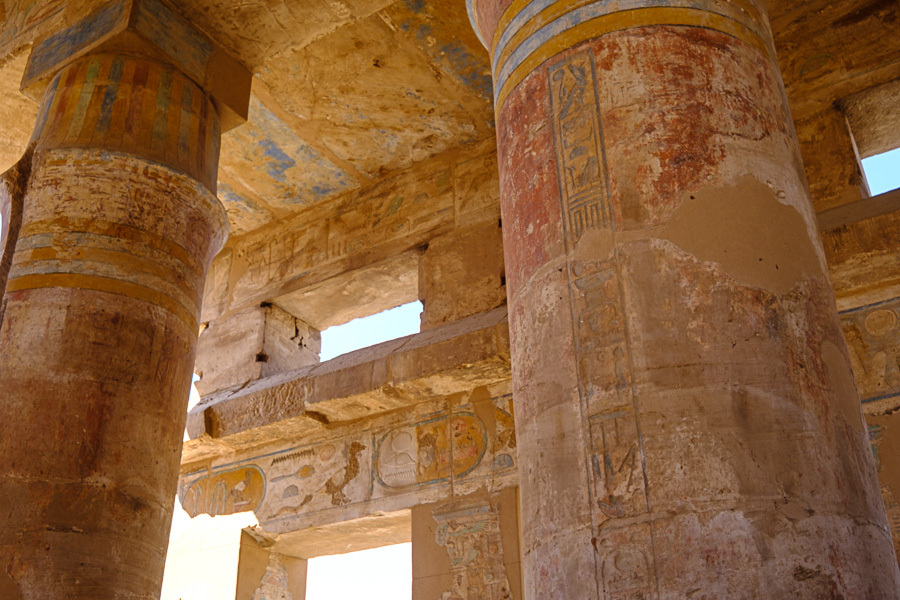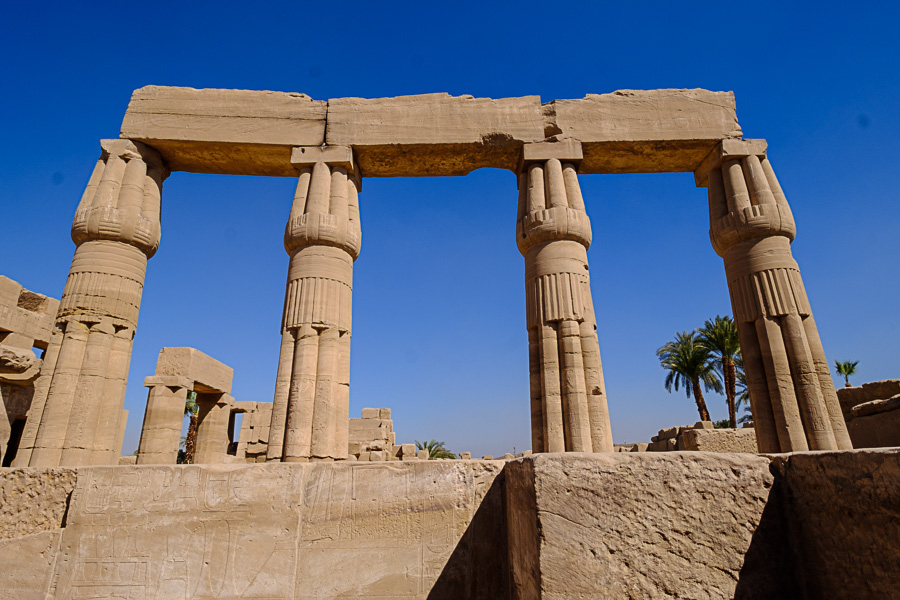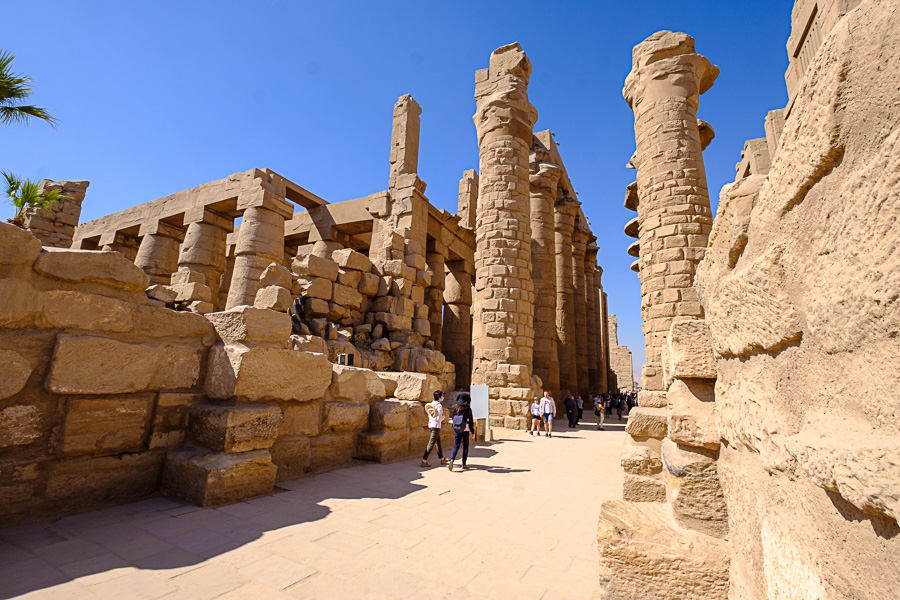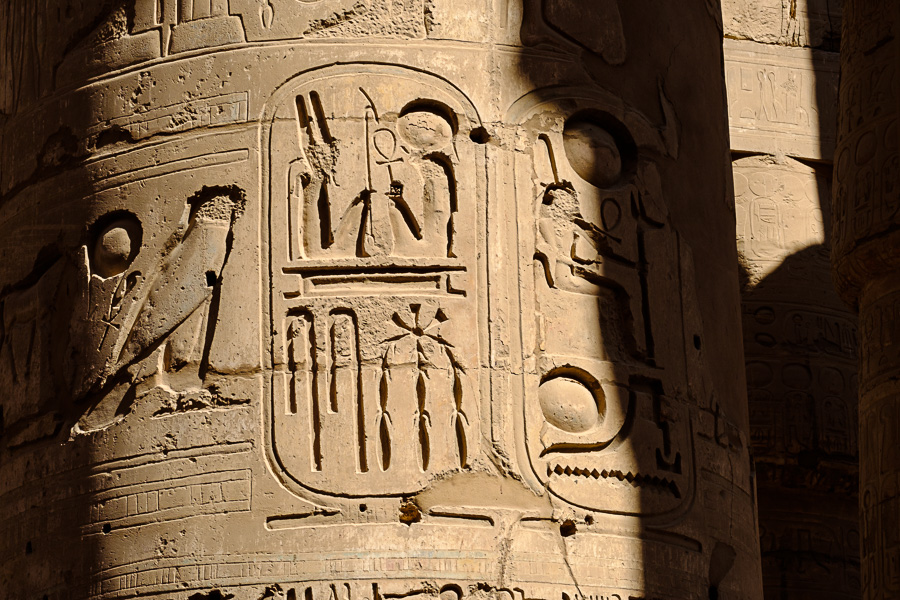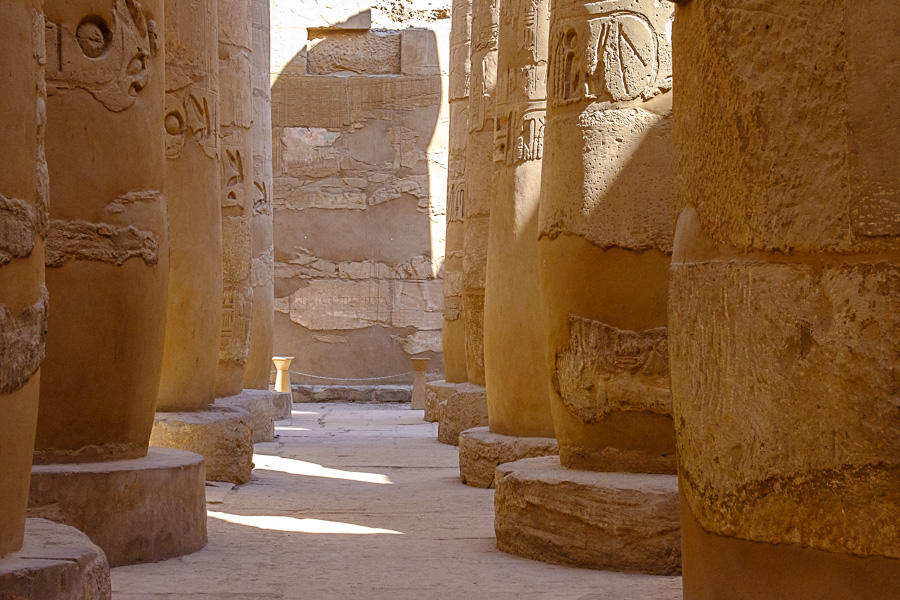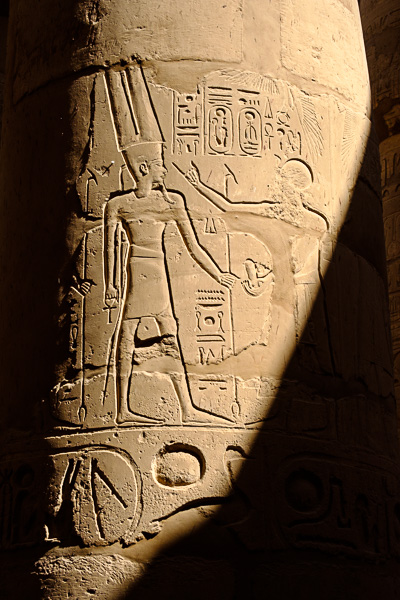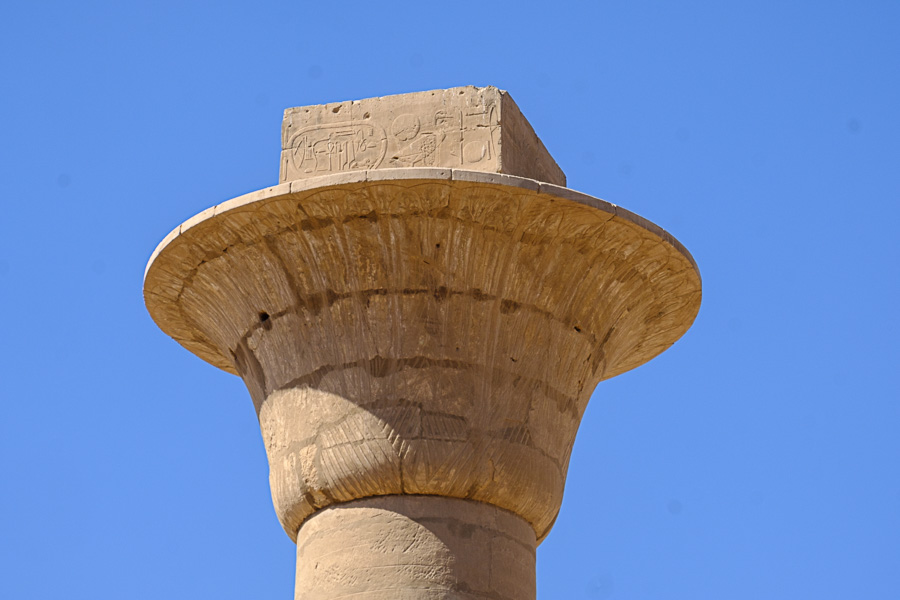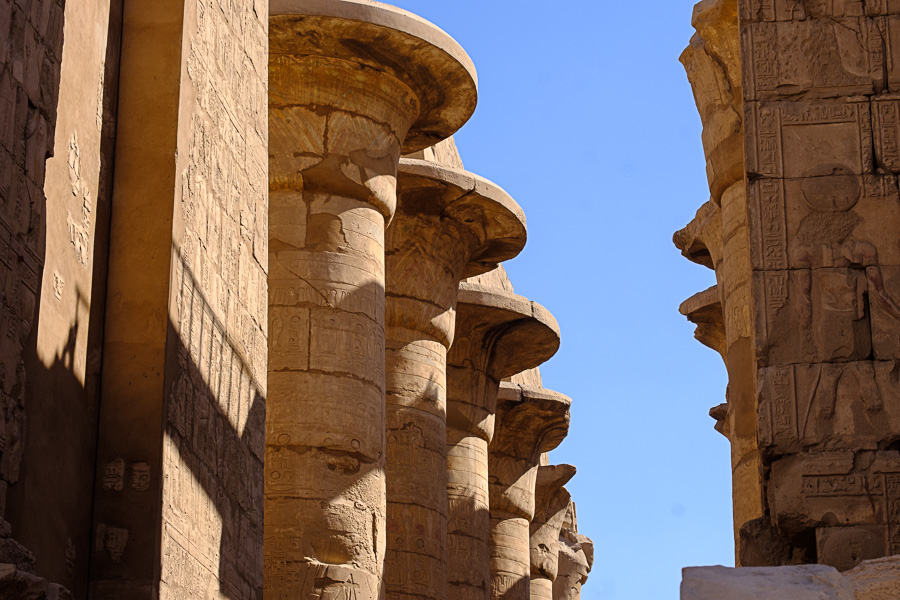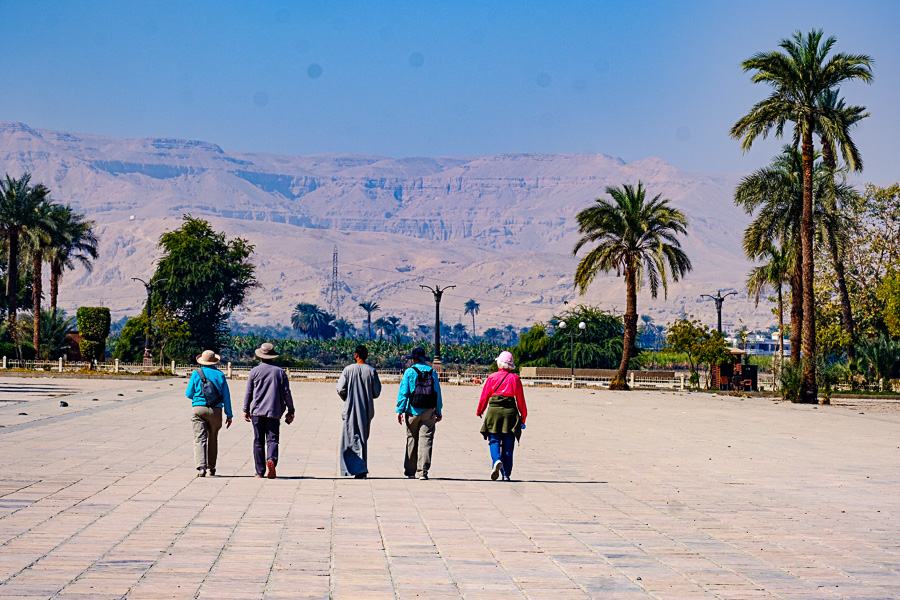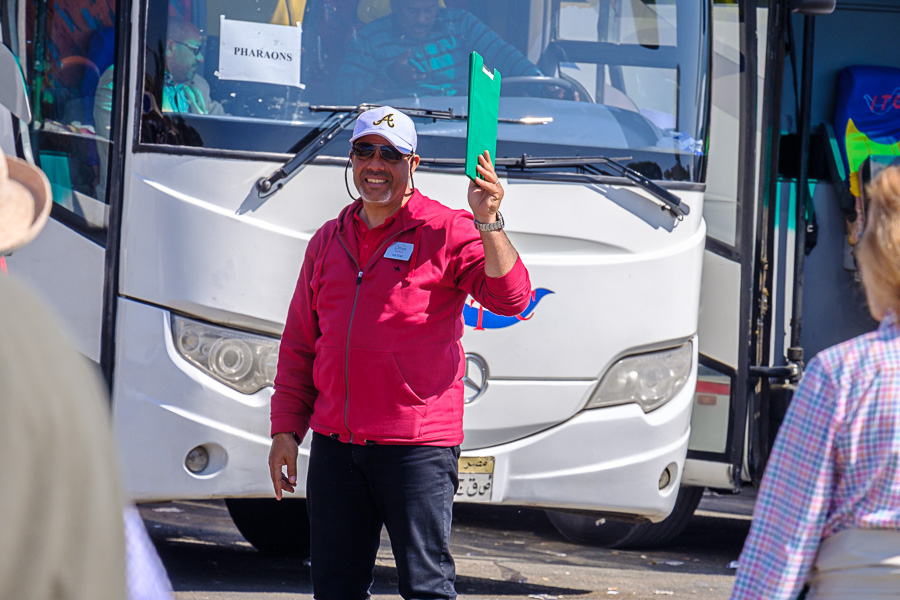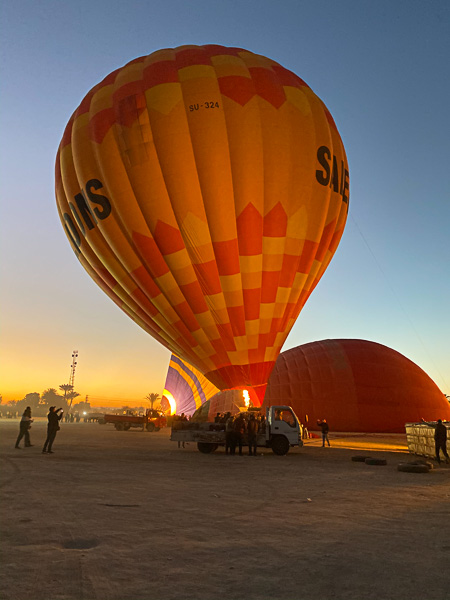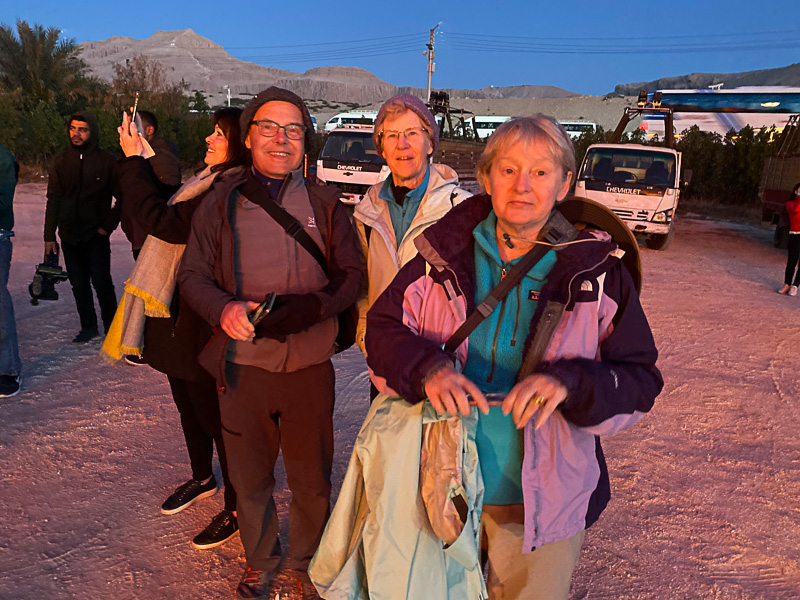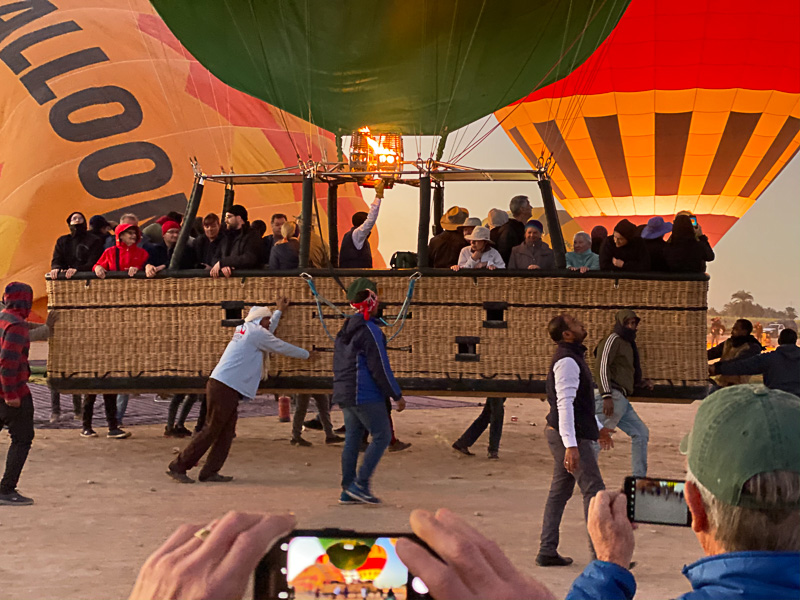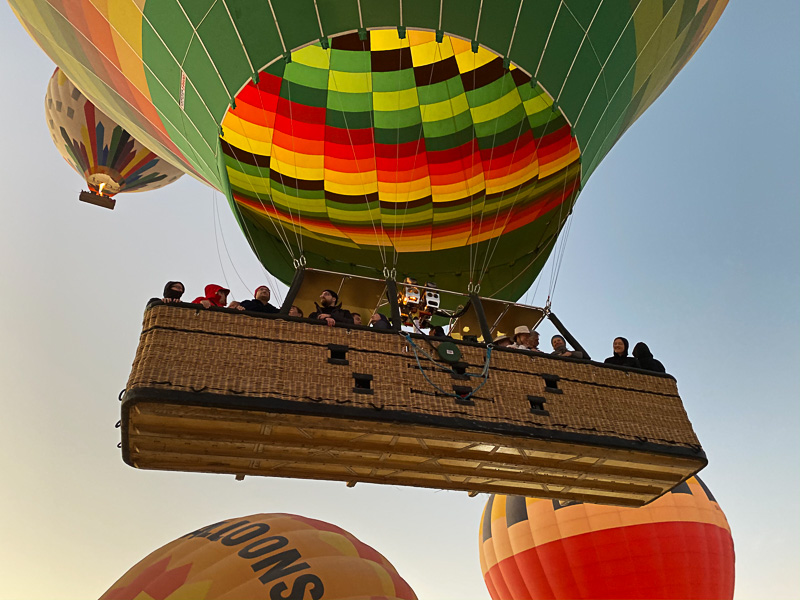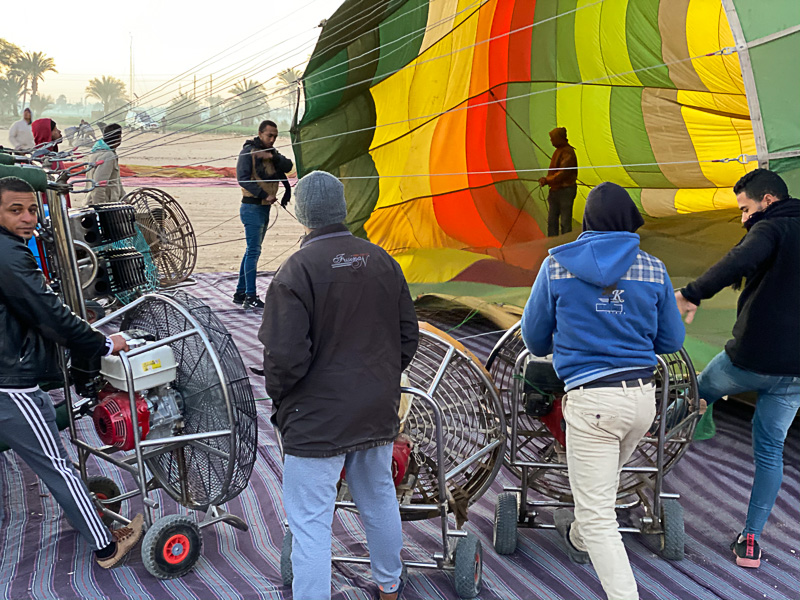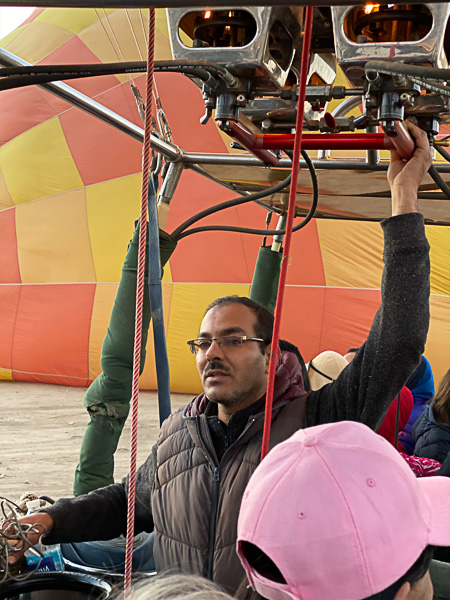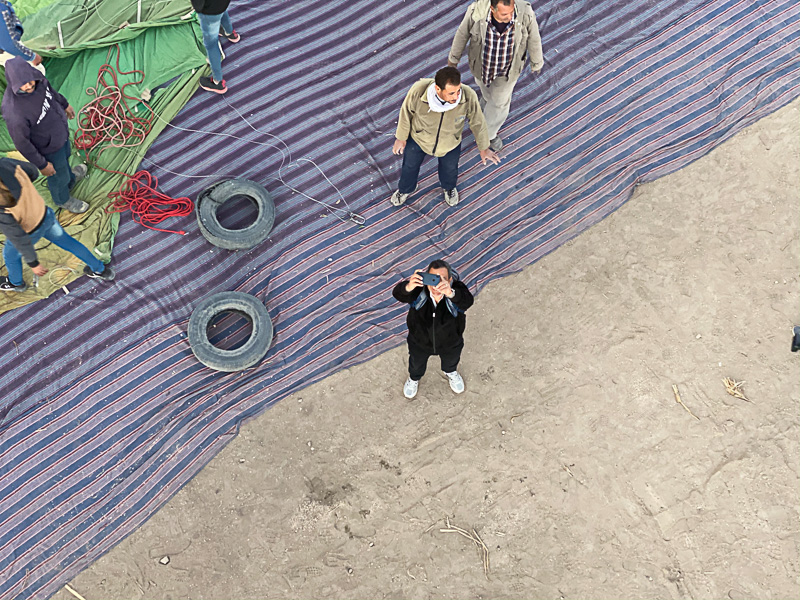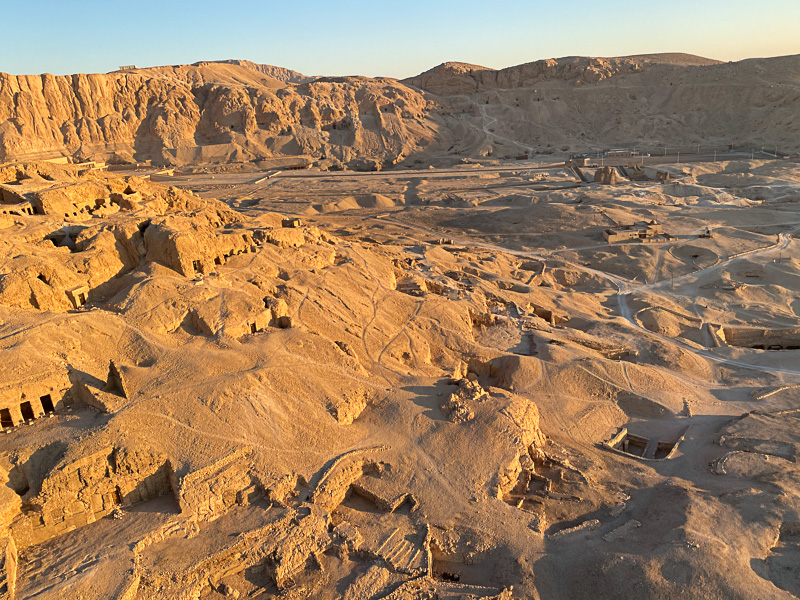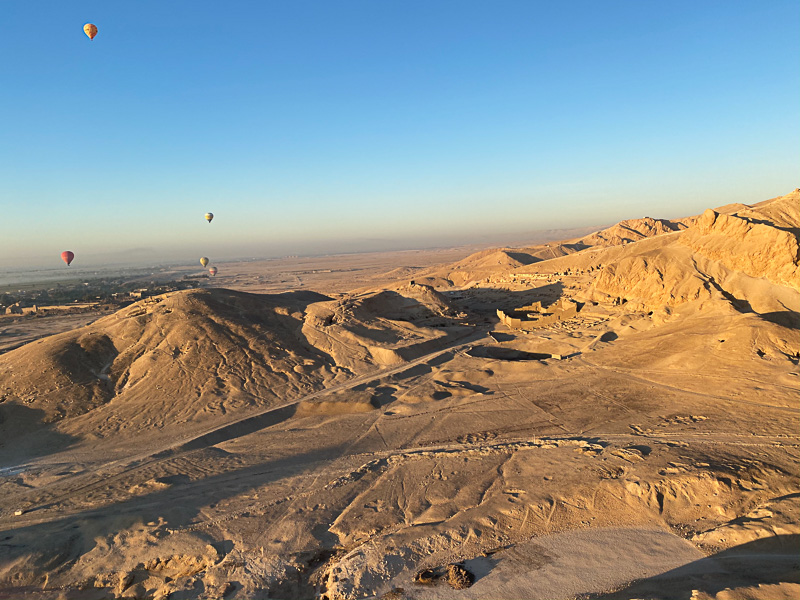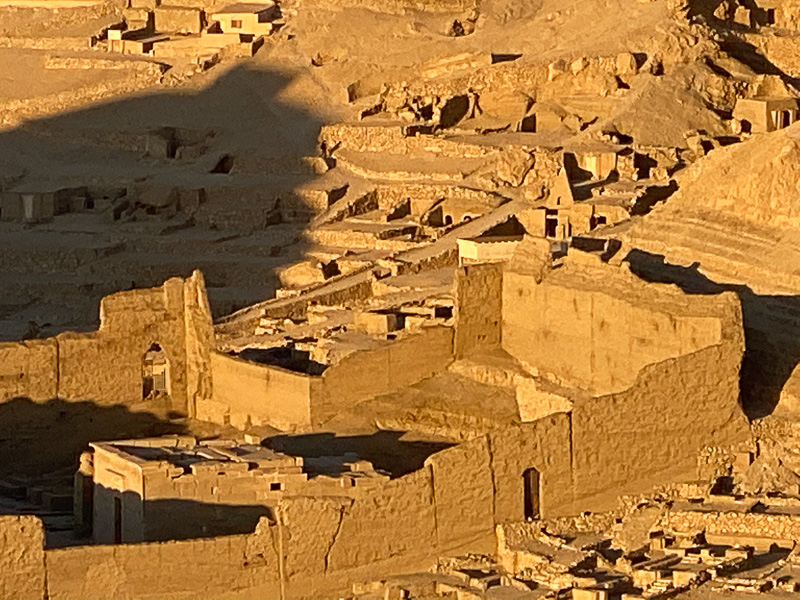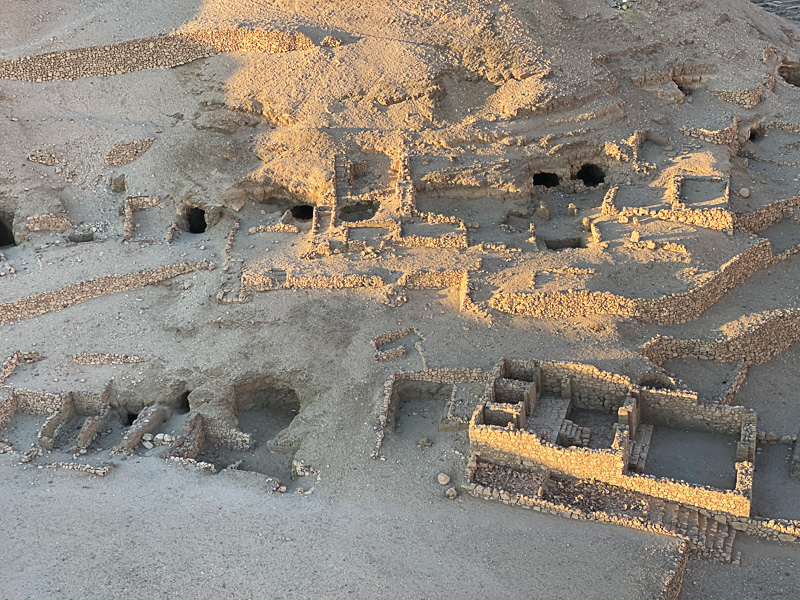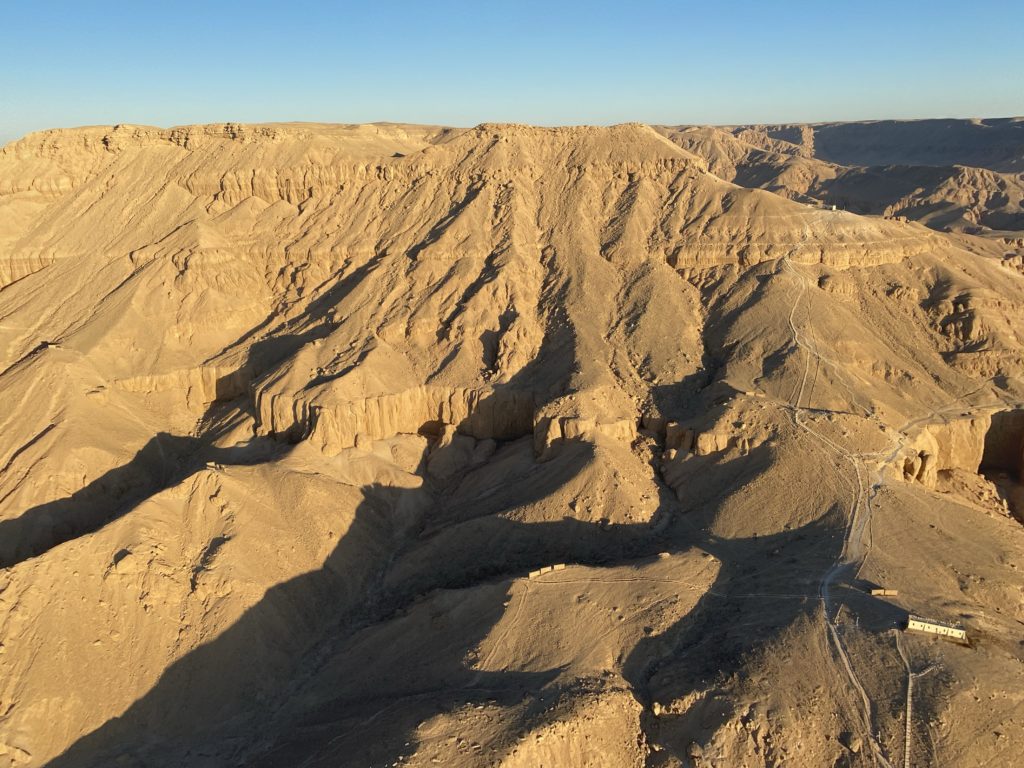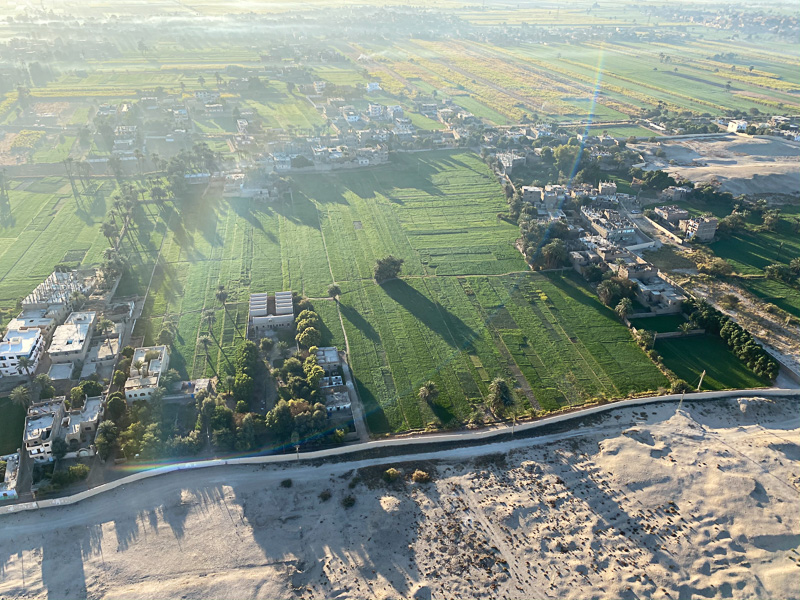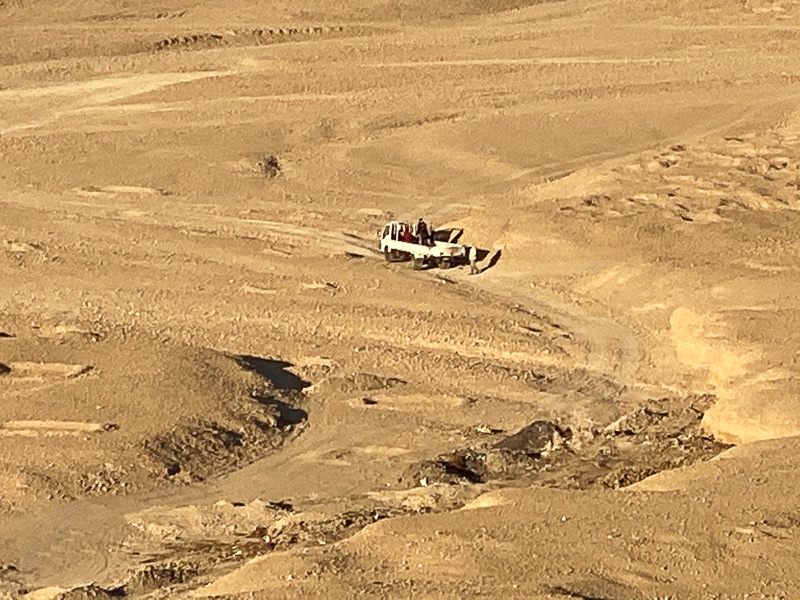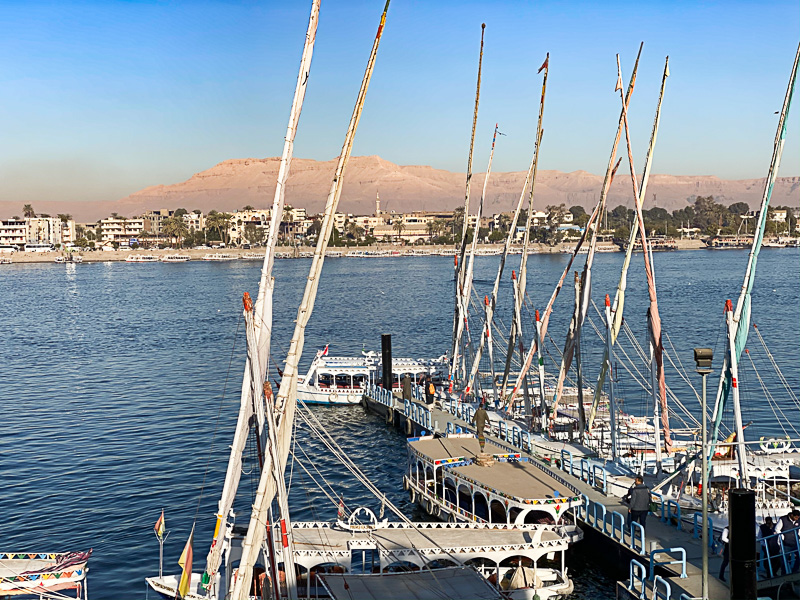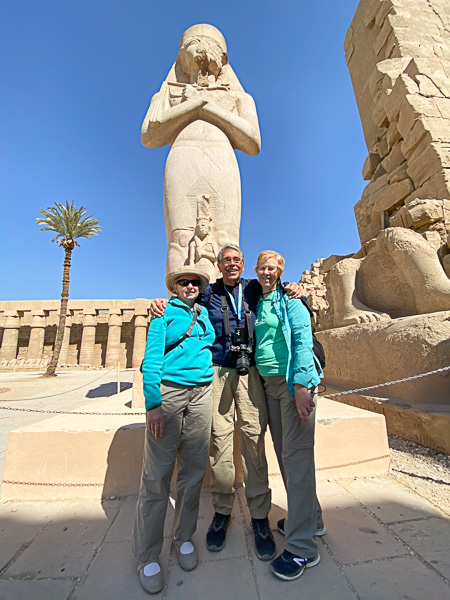The last time Judy and I went for a balloon ride we were in Myanmar. It was early morning with a slight, hazy mist. The views as we passed silently over fields dotted with Hindu shrines was breathtaking. Today, here in Luxor, we equaled and maybe surpassed that experience.
The alarm rang at 4:15, then on the bus to the ferry shuttle, across the Nile and on another bus to the field by 5:30 AM. Ours was one of the last to inflate but that was OK because we got a ride that surpassed what most of the others did.
Our pilot has been flying balloons for 17 years but has studied Egyptology for 45 years. He says many balloon operators like to take off at precisely 6 AM, the first allowable time, make a 30-minute journey and then return for a second run before the 8 AM ending time. He prefers a single, longer run and that’s what we got. And rather than shooting straight up into the air like the other balloons he stayed low – maybe 500 feet maximum, so we could drift across both the Valley of the Kings and the Valley of the Queens.
As the names imply, this is where pharaohs and their wives and consorts reside after death. The valleys were used for about 500 years during the New Kingdom. The theory was that by digging shafts into the side of the hill it would be easier to hide the tombs from grave robbers than is possible by building a pyramid that says, “Here I am, come and get it!” The cave system didn’t work very well. Most tombs were raided over the centuries, including Ramses II whose grave was seriously damaged. King Tut is the one notable exception; his grave was discovered intact. For a kid king who didn’t accomplish much and died young he gets more press coverage than all the other pharaohs combined.
We’ll go see the valley from the ground tomorrow.
The other stop for the day was the Karnak Temple, a monstrous complex that has been added to and modified by every New Kingdom pharaoh who came along. It goes on and on. Like most temples the Romans had their way with it and Christians used it for worship back in the day.
One interesting story involved a pair of gigantic obelisks commissioned by Hatshepsut, one of the few women pharaohs. They are almost 100 feet tall and are of granite taken from Aswan and floated down the river and then erected by a clever system of earthen and sand ramps. Concerned that the pharaohs who would follow her would take down her monuments, Hatshepsut dedicated the obelisks to Amon, the chief god of the time. That left the next guy in a bind. Did he want to invoke the wrath of Amon by tearing down his obelisks? Not a good idea. Instead he erected walls around the obelisks so they were hidden from view. The walls have partially fallen down so the obelisks can be seen.
Many of Egypt’s obelisks have been removed to other countries including Paris, London, Washington D.C. and a number to Rome and elsewhere in Italy. Only five remain in Egypt.
We also made a stop at a papyrus factory for a demonstration on how papyrus is made. And of course there was a shopping opportunity. Come see outs sometime.
Hatem held forth on the sun deck again this afternoon. He was asked about women’s rights in Egypt. He said that traditionally women are subservient to men. Every woman must have a man who oversees and protects her: her father, uncle, grandfather, husband. He is responsible for her financially and for her proper behavior. Education to teach women to read and write is about the limit. A woman’s job is to manage the household and raise the kids. If a man and his sister have a father who dies, the man inherits two-thirds, the sister one third.
This attitude prevails in the country (generally the south of Egypt) while western norms are taking hold in cities. He says we should imagine conditions to be as they were in our country when we were kids.
Today in Egypt there are two sets of laws: civil laws that dictate how the country should be run and religious laws that are determined by each faith. For instance, a man may divorce his wife by making the declaration three times. Then it’s a done deal. A woman wants a divorce she must ask her husband who can say yes or no. If they disagree, the case is adjudicated by the family court, which is run according to Islamic laws. He is a strong advocate of separation of civic and religious legal systems. Things get murky if the two are merged.
The Muslim Brotherhood in 2011 seized the opportunity that arose from the Arab Spring. Mubarak, the strong man dictator was ejected and popular elections were held according to a new democracy-based constitution. The only party with a strong base of supporters was the Brotherhood. They won but proved to be inexperienced and ineffective administrators and who seemed willing to blur the lines between civil and religious matters. When 30 million Egyptians took to the streets in protest the Army, led by General al Sisi had the choice of firing on the 30 million demonstrators or forcing Morsi from office. They did the latter and Sisi, a hero who saved Egypt from the Muslim Brotherhood won the next election by a landslide. Now the question is, as we talked about yesterday, if he can pull Egypt up and improve life for Egyptians.
Tomorrow we leave the ship and check into a hotel and have a day in Luxor. Then off to Cairo.
Sorry, tonight’s pictures are in reverse order. The morning ballooning is at the end. I’m too lazy/tired to fix it!


